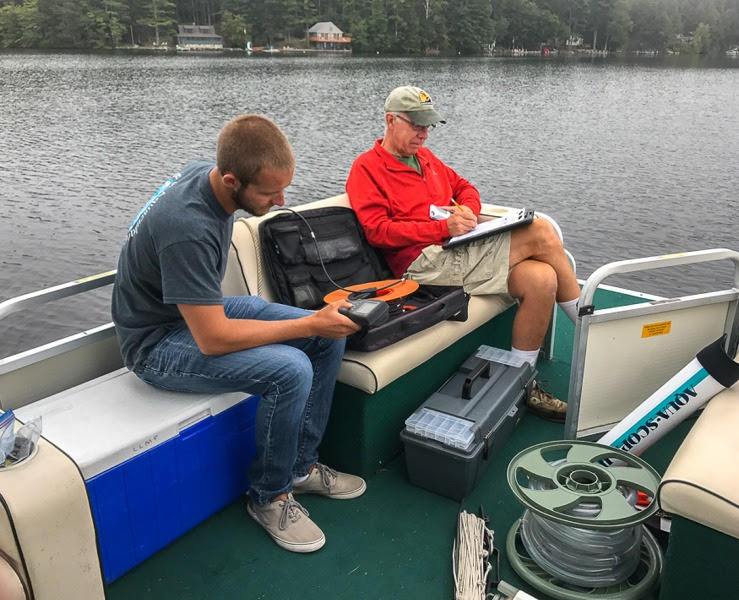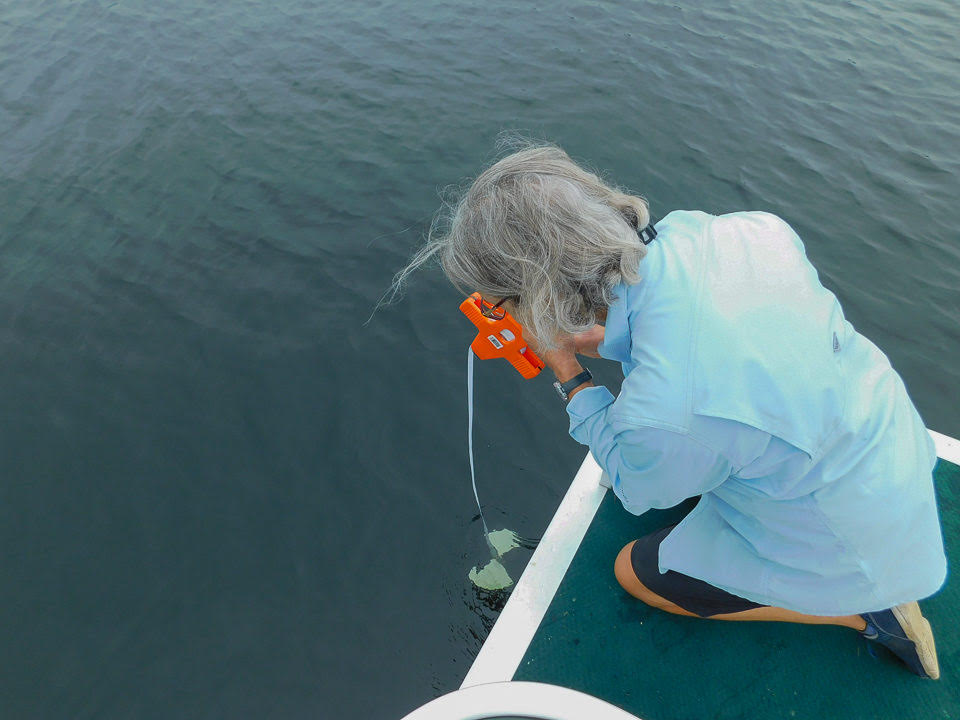Lake Protection
The Lovell Lake Association has created and funds a platform for Lake Protection aimed at trying to keep Lovell Lake as pristine as possible. The 4 elements of the platform are Lake Host, Weed Watch, Water Quality Preservation and Water Quality Monitoring. Each of these volunteer groups play complementary roles and push best practices for lake water management.
The Lake Hosts monitor the boat ramp looking for invasive species on watercraft coming from other water bodies while the Weed Watch folks look for evidence of an outbreak of milfoil or other invasive species. The Preservation team works with homeowners and the town on ways to reduce the inflow of nutrients in the lake. The Monitoring crew performs sampling, analysis and reporting giving us timely, detailed report cards on how we are doing. The Disaster Recovery team interfaces with each of these functions.
WATER QUALITY PRESERVATION
The Preservation team focuses on reducing the external loading of nutrients into the watershed. We work with homeowners, the town, the state and private agencies like AWWA to find solutions/funding for eliminating storm water erosion, upgrading septic systems or just identifying ways we can all minimize our impact on the lake. The SWEEP program, our mechanism for helping fund remediation projects, is described below.
Storm Water Erosion Elimination Program (SWEEP)
As stated in the current By-laws of the Association, our purpose is to “promote the welfare of Lovell Lake and its environment and community”. The Board has recognized over the years that maintaining and improving the quality of lake water is one of the most important aspects of promoting the Lake’s welfare and has instituted several multi-year programs (e.g., weed watch, water testing, Lake Host) to achieve that. The generosity of our membership allows us to expand our reach to fund additional proactive measures against degradation of our water quality.
Our first initiative is the Storm Water Erosion Elimination Program, or SWEEP, which financially assists landowners in the remediation of soil erosion projects. Our plan is simple: LLA will pay 50% of the project costs, capped at a $2,000 grant, for qualifying high impact projects or 33% of the project costs, capped at $1,000, for qualifying low and medium impact projects. The water quality impact assessments from the 2022 AWWA/LLA Watershed Survey (link below) will be used to determine the impact level.
The grant program for each Calendar year is allocated on a first come, first served basis for completed applications. Priority is given to higher impact projects. To apply for a SWEEP grant, please complete the application (see link below) including a brief description of the project. Then e-mail the form to the address below or give the completed form to a member of our LLA Watershed Planning Committee. Once we receive the form, a member of our team will contact you and together we will complete the grant analysis. A landscape plan from AWWA or equivalent detailed landscape plan is necessary for approval of the grant. A member of the Water Shed Planning Committee will assist with the landscape plan. The amount of the grant will be stipulated when your project is approved. Upon completion, funds will be distributed following visual confirmation of the project by a member of our committee and submission of project receipts. Please contact us with any questions or comments at (508) 789 2293 (Peter Lewis) or [email protected].
Links to the 2022 Watershed Survey, the full Water Quality Reserve Spending Policy and the SWEEP grant application form are included below.
WATER QUALITY MONITORING
By Glenn and Stephanie Thornton
The Lovell Lake Association partners with the UNH Extension Lakes Lay Monitoring Program (LLMP) to sample the water quality of Lovell Lake twice a month, May through early October. UNH interns collect water samples from two areas of Lovell Lake. Lab tests are conducted by the interns to determine if the water quality is improving or deteriorating over time.
We provide the interns access to our pontoon boat and assist with the testing. Observers are always welcome. Glenn and Stephanie Thornton can be contacted at 603-630-5470 (cell) or at [email protected].
To view Lovell Lake water quality data from 1989 to 2024, visit the NH Lakes Lay Monitoring Program Reports website. Use the link in the button above to go directly to the most recent water quality report.
Cyanobacteria bloom reporting
If you suspect a cyanobacteria bloom, please use the link below to file an online bloom report with the NHDES. A cell phone or connected tablet is needed so two photos of the bloom (a close-up and a wide view) can be included. If you have questions or need help, contact Stephanie Thornton by text or phone at 603-630-5470.
Water Quality Resources
Websites
NH Department of Environmental Services – Cyanobacteria Harmfult Algal Blooms: Cyanobacteria Harmful Algal Blooms | NH Department of Environmental Services
Publications
Landscaping at the Water’s Edge, UNH Cooperative Extension, 2007, 93 pages: https://extension.unh.edu/sites/default/files/migrated_unmanaged_files/resource004159_rep5940.pdf
New Hampshire Homeowner’s Guide to Stormwater Management, NHDES 2019, 66 pages: https://www4.des.state.nh.us/SoakNH/wp-content/uploads/2020/03/Homeowners-Guide-to-Stormwater-Management-2019.pdf
NHDES Environmental Fact Sheets
Cyanobacteria in New Hampshire Waters: https://www.des.nh.gov/sites/g/files/ehbemt341/files/documents/2020-01/wmb-10.pdf
Green Filamentous Algae: https://www.des.nh.gov/sites/g/files/ehbemt341/files/documents/bb-65.pdf
Phosphorus in Lakes: https://www.des.nh.gov/sites/g/files/ehbemt341/files/documents/2020-01/bb-20.pdf
Iron Bacteria in Surface Water: https://www.des.nh.gov/sites/g/files/ehbemt341/files/documents/2020-01/bb-18.pdf
Lake Foam: https://www.des.nh.gov/sites/g/files/ehbemt341/files/documents/bb-5.pdf
Fireworks and NH Waterbodies: https://www.des.nh.gov/sites/g/files/ehbemt341/files/documents/2020-01/bb-60.pdf
Use of Lakes and Streams for Domestic Water Supply: https://www.des.nh.gov/sites/g/files/ehbemt341/files/documents/2020-01/dwgb-1-11.pdf
UNH/NH Lakes Lay Monitoring Program Reports: Link to historical data



